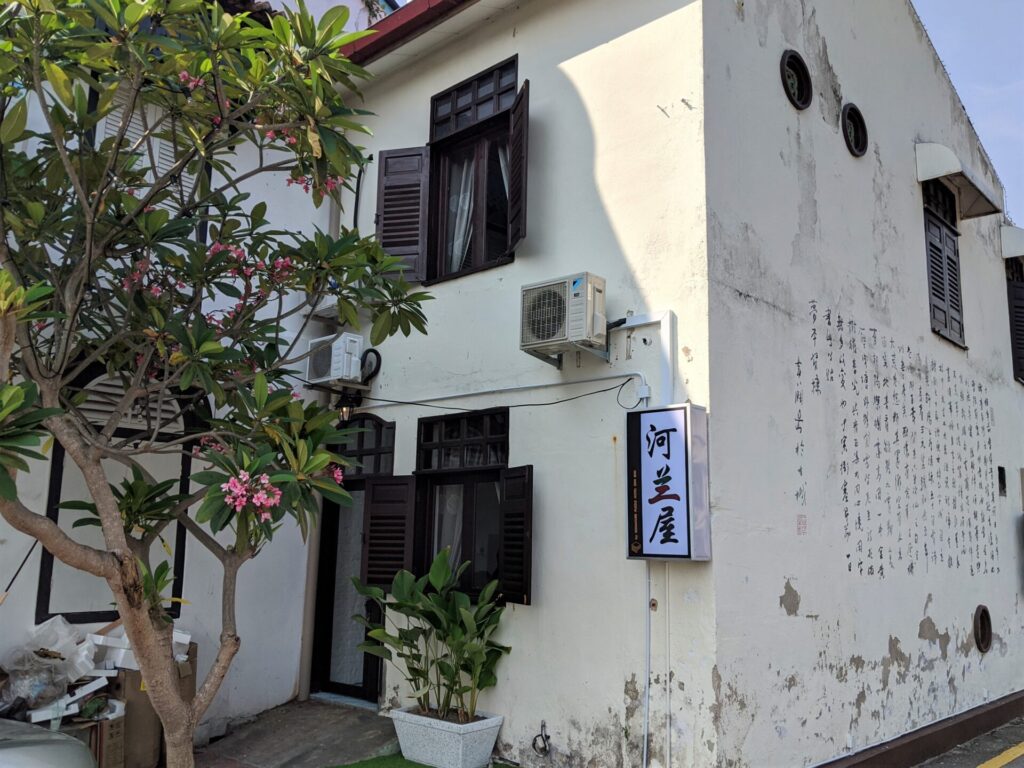
In the financial world, front-loading means to invest a large sum early instead of spacing it out over time. (Not to be confused with a front-end load, which is a fee charged by some mutual funds that I would never invest in.) For example, I could front-load my IRA contributions by investing the $6000 maximum in January each year as opposed to contributing $500 per month. Or I could front-load my 401k by contributing more than $1583 per month, reaching the $19,000 yearly maximum before the end of December.
Prior to retirement, it doesn’t really matter all that much. Since I would never hold a bunch of cash waiting to invest, my money is getting invested either way. The only slight difference is whether it’s being invested in a tax-advantaged account or a taxable account. I could front-load a specific account, but my total invested amount for the calendar year wouldn’t change. But now that I’m no longer an income earner, front-loading takes on a whole different meaning. It involves steps I can take early on to boost my portfolio longevity and retirement success.
Sequence Of Returns Risk And Why It’s Important
Before I detail what actions I’m taking, I need to talk about how the sequence of returns affects portfolio balances and retirement outcomes. One of the biggest threats that any retiree faces is poor market returns during the first handful of years after quitting work. In retirement planning circles, this carries the label of Sequence of Returns Risk. In the most basic terms, there is a risk that market returns will be poor during the early part of my retirement. That could cause my portfolio to shrink too much, which would increase the risk that I could run out of money or be forced to take drastic measures. Obviously, running out of money is a very scary prospect.

I’ll share a quick illustration of how this risk works by picking a poor series of short term returns. Yearly returns of -30%, -10%, -20%, +20%, +10%, and +30% have a CAGR of -2.39%. Applying these returns in the opposite direction also supplies the same result. This is due to the transitive property of math. A portfolio starting at $1,000,000 would end with $864,864 after these 6 years no matter which order the returns happened.
This may make it seem like the sequence of returns is inconsequential since the two portfolios have the same ending balance. But the above illustration is not reality for retirees. My portfolio cannot sit untouched while I watch returns ebb and flow. I still need to pay for food, shelter, and everything else. Once I factor in withdrawals for living expenses, the importance of the sequence becomes evident. The same scenarios above that ended in identical portfolio values now result in vast disparities. When these portfolios of $1,000,000 have my annual spending budget of $36,000 removed, the ending value is 20% lower for the portfolio with the negative returns at the beginning as opposed to the end. That’s a huge difference in only 6 years with portfolios receiving the same CAGR.
While I don’t have control over the sequence of returns that I receive, there are still actions I can take to help reduce my Sequence of Returns Risk. The two main things are owning bonds and spending less money. Bonds reduce volatility and will help protect against a stock market crash. Spending less means I’m withdrawing at lower rate from my portfolio so more of my money stays invested. This is where my front-loading design comes into play.
Note that when I say “bonds” I’m referencing bond funds. Specifically, I own VBTLX. By “stocks” I’m referencing stock funds. Specifically, I own VTSAX and VTIAX.
Front-Loading Bond Allocations
During my working career, I held around 15% bonds. Now that I’m retired, I’ve doubled that to 30%. I chose this based on a number of factors and backtesting results, but what it mostly boils down to is that a 70/30 stock/bond portfolio is the sweet spot between growth and safety for my risk tolerance. I can apply a 70/30 allocation to my previous example to show that holding bonds during poor markets increases portfolio values. This is the case no matter which way the returns are applied. (I used 0% bond returns for simplicity, but I think it’s reasonable to expect them to increase during down markets at a minimum which would result in higher balances.)
As you can see, these extra bonds will help stabilize my portfolio if I encounter a poor market sequence, but I still hold enough stocks to capture most of the gains of a rising stock market.
This allocation is a little more aggressive than the classic 60/40 portfolio, owing to my longer than normal retirement horizon. It’s also very close to the 75/25 stock/bond portfolio that had the best historical success rate according to the updated Trinity Study. (The Trinity Study is what spawned The 4% Rule. If you want a tl;dr, see Table 2 for inflation-adjusted withdrawal results)

So why don’t I hold even more bonds? If 30% is good, wouldn’t 50, 60, or even 70% offer better protection? Holding a majority of bonds comes with its own set of risks. The main one is that my overall investment returns would not be high enough over the long term. Bonds are great at reducing volatility, but their expected long term return is not as high as stocks. So while it would be ideal to have little to no volatility, that would increase the risk that my portfolio would not keep up with my living expenses over time. As such, I’m front-loading bonds within reason.
Front-Loading Low Spending In Cheaper Countries
It’s no coincidence that we decided to start our retirement in Southeast Asia. I always knew it was cheap, but didn’t realize exactly how cheap until we made our first trip here in February 2019 for our last official vacation. Lower base costs for food and rent mean that keeping our spending below budget is not a sacrifice. Naturally, spending less means more of our money stays invested and results in a larger portfolio value no matter what the market returns.
This lower spending is still providing us with nice modern apartments, delicious food, and plenty of fun tourist things (like visiting Angkor Wat). It simply doesn’t take much money to live a good life in Southeast Asia, especially when moving slowly. We already fell in love with one stop, and have thoroughly enjoyed most of the others. And we’ve barely scratched the surface!

We have our sights on many other inexpensive areas in Latin America and Eastern Europe as well during the initial years of our retirement. That isn’t meant to imply that we’re only interested in cheap places throughout the world. We also want to spend time in Western Europe, Japan, and other more expensive destinations. It’s just that we’ve decided to keep our spending low for the first handful of years by visiting these cheaper destinations first. We were planning to visit all of these places anyway, so ordering them in a way that helps our retirement success seems like a no brainer.
Front-Loading Zero Tax Years
Lower spending means a reduced tax bill as well. In fact, I plan to reduce it so much that I expect to pay $0 in taxes for the foreseeable future. This is actually fairly easy to do as someone without earned income. The lack of earned income means I’m not subject to payroll taxes like Social Security or Medicare. I plan to convert $24,000 per year from my pre-tax IRA accounts to my post-tax Roth accounts. This amount is strategic because it matches the standard deduction amount. While this conversion is taxed as regular income, there will be a $0 tax bill since the entire amount is covered by the standard deduction.

Conveniently, 5 years after the conversion to Roth, this money is also available for me to withdraw both tax- and penalty-free. This is the main way that early retirees can access that 401k or IRA money that’s supposedly “locked away” until age 59.5. There are other ways too, but I don’t want to reinvent the wheel here. If you’re interested in all of the ways to access your money early while avoiding early withdrawal penalties, I recommend reading this flagship post by the Mad Fientist.
During this time, I will still need money for living expenses. This will come from my taxable brokerage account. Withdrawals from this account are taxed at capital gains rates. That means that under current tax law, I can have up to $78,750 in dividends and capital gains and still be in the 0% tax bracket (for married couples). Our prospective budget is way less than that at $36,000, and if you’ve been following our spending reports, you’ll notice that we haven’t been spending anywhere close to our budgeted number. As such, there’s no tax liability here either.
Front-Loading Low Spending Years Due To Inflation
We’re spending less now than we likely ever will. If we ever decide to stop traveling and settle back in the US, our spending will certainly increase. Even if we continue to travel abroad, the low costs that we’re currently enjoying won’t last forever. Inflation rates in developing nations are nearly always higher than in developed ones. Having our investments denominated in USD will help offset some of this inflation with a better exchange rate, but it’s only a partial solution. We need to be able to spend at a rate higher than US inflation if we want to maintain the same standard of living. Spending little now will only increase our chances for portfolio growth that can sustain higher spending in the future.

It’s not just inflation that we need to worry about though. Our spending will also likely need to increase over time due to aging. Currently we can schlep our 30 pound backpacks around just fine. We can walk 10 or more miles in a day. But that may not always be the case. Changes in our physical abilities could result in more cab rides or other travel conveniences. We’re also well aware that we’re probably the healthiest now that we’ll ever be. Our bodies will break down more as we age. We’ll need medical care more frequently. Our insurance premiums will also increase with age. And while medical care is very cheap abroad, it’s still extra spending that needs to take place if we want to take care of ourselves.
For all of these reasons, I’m front-loading my retirement to fight against Sequence of Returns Risk. This will bolster my portfolio not only for the next recession, but also the long term. Despite the fact that I’m currently spending way less than I budgeted, it doesn’t feel like a sacrifice at all. I’m having a lot of fun in cheaper countries and I’m setting myself up for a very long and successful retirement while doing it.
LOVE IT!! Super cool approach. It’s a little different than other plans I’ve seen for early retirees and is giving me some ideas 🙂 .
Nice! And yeah, I’ve always been a little bit different. hahaha
We plan to enact the same approach. I must say it’s a bit comforting to see someone with such a well thought out plan so similar to ours.
Even the history of our asset allocation are within 5% of each other. I typically held a 10% bond allocation. As we approach our launch date in less than a year, I recently bumped our bond allocation to 25%. I knew it was time because that super aggressive allocation was causing me some restlessness that I hadn’t experienced before we really started our slow travel planning. I’m resting well now.
I remember a light bulb going off reading that Mad Fientist post. I knew about Roth conversions, but it really helped me think about the management of our investments in a different light.
Then there was the idea of front loading our retirement with geoarbitrage. We also plan to start in southeast Asia. My wife was born in Vietnam, but lived most of her life in the U.S. She is particularly excited about that part of the world.
BTW… Are you planning to do your own taxes? I’m considering having a CPA experienced in expats and slow travels do ours for maybe the first year or two.
I’ve got some more catching up to do on your blog. Keep up the good work in the meantime.
Hello internet brother! I usually find that writing about asset allocation is hard because it’s such a personal thing, so I’m glad it clicked with you. I figure I should be able to handle my own taxes, since I’m not required to file anywhere but the US. The only tricky year will be this one, 2019, as we moved states mid-year. Once that’s filed, it should be smooth sailing after that. Thanks for stopping by!
I am not sure I would call this front loading. The technique with increased bond holdings sound like classic asset allocation strategy. Also, there are many variations on the 4% rule when you witdrawal more than 4% when the market is up and less than 4% when the market is down.
Re: front loading contributions to 401k. There is a saying: it’s not timing the market, it is time in the market. The point being the best time to invest is now if your time horizon is the long term. W.r.t. 401k, you can front-load by simply increasing your contribution percentage. The secondary benefit is that if you get laid off, you have more contributed to your 401k then if you spread it evenly over the year. This is beneficial if there is a delay in getting a new job with a 401k. Be careful not to front-load the contribution so much as to miss out on your company match. I routinely front load my catch-up contributions because they have no company match. I contribute the entire amount in the first quarter. It has the added effect of resulting in increased take-home pay after the catch-up limit is reached.
Similarly I back load my income tax payments. By October and November I have a better sense of what my interest, dividends and capital gains will be for the year. I increase my paycheck withholding in October through December to cover taxes that will be due on April 15. Many people feel it is better to not pay taxes until April 15 if there is no penalty. However, I have been hit with a large tax bill due April 15 that creates a cashflow problem. I don’t want to have to make a capital gains/loss transaction to free up cash for my tax bill.
As I have gotten older, the float matters less to me. I want to get to net zero for my obligations ASAP. That means I want to zero out my tax bill before April 15. I want to get my money into the 401k ASAP. I used to take most of the grace period to pay off my credit card balance but now I pay it the day the statement is published. I want my net worth balance to be clear of any future encumbrances.
Hi Dan,
Thanks for reading. Admittedly, this is sort of my own take on the definition of front-loading. But I’m aiming to make it popular eventually.
There are a bunch of different withdrawal methods, but I wouldn’t call them variations of the 4% rule since that moniker references a specific withdrawal method called “constant inflation-adjusted spending”, no matter the actual starting percentage chosen. If you want to read more about them, this is a pretty good intro from noted retirement researcher Wade Pfau: https://www.onefpa.org/journal/Pages/OCT15-Making-Sense-Out-of-Variable-Spending-Strategies-for-Retirees.aspx
Is there a better way to allocate stocks/bonds other than portfolio percentages? If the sole purpose of bonds is to reduce sequence risk then why not use an actual number? For example, if the average bear market is less than two years – would it be better to have 2-3 years of bonds, 80-120k in the 1M example, way less than 300k in a 70/30 mix. IOW 300k in bonds would get you through a 7.5 bear market, seems overly conservative.
I like to use percentages because that makes it easy to rebalance when needed. I guess you could pick an exact amount, but then your overall asset allocation is going to vary over time. My goal is not just to guard against a single average bear market, but to choose an asset allocation that strikes a proper balance between conservation and growth over many decades and many bear markets. In doing so, the extra bonds will help against a poor sequence of returns, but that’s really just part of an overall long term investment strategy. This strategy seems to fit my risk tolerance, but of course, may not be the proper choice for everyone. Thanks for the comment.
@mrallocation – see Big ERNs post on this topic. If you use bonds on the way down (peak to trough) then you are left with only equities to sell at the bottom and on the slow climb back up (which is longer than 2 years).
Thanks for this amazing article. I have long been looking for someone to explain the tax implications clearly in early retirement. I also love how you are hedging against down markets and inflation by traveling to cheaper countries earlier on. This is definitely a strategy I will consider when I finally retire as well!
Thanks Tom. We’re pretty lucky that there are so many wonderful places that are so cheap. Probably can’t visit them all, but it’s nice to have options.
Thanks so much for writing this very interesting article Eric. I’m so jealous of all you guys that learned about FIRE at such a young age. That said, my husband and I have learned so much from the FIRE community and have definitely put what we’ve learned into action. While we’re happy to live on our government pension in these early years of retirement, sadly it is fully taxable so we’ll never experience the tax free years so many of you early FIRE guys will. We do perform Roth conversions every year but only filling up the 12% bracket. We’re both 62 and retired almost four years ago and fortunately haven’t needed to touch our retirement accounts so in a sense, that’s our front loading, simply not spending any of it. We are in complete agreement with your idea of front loading the cheaper countries first as we also want to visit everywhere so why not focus on many of the cheaper countries in the early years. I continue to love your writing and you have me very excited about Malaysia and Penang specifically.
This entire blog is amazing. It is basically everything I want on the Internet in one place. A wonderful union of two of my biggest interests. Thank you for writing it.
Thanks Chef. I’m glad you’re finding it useful.